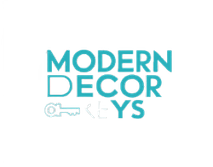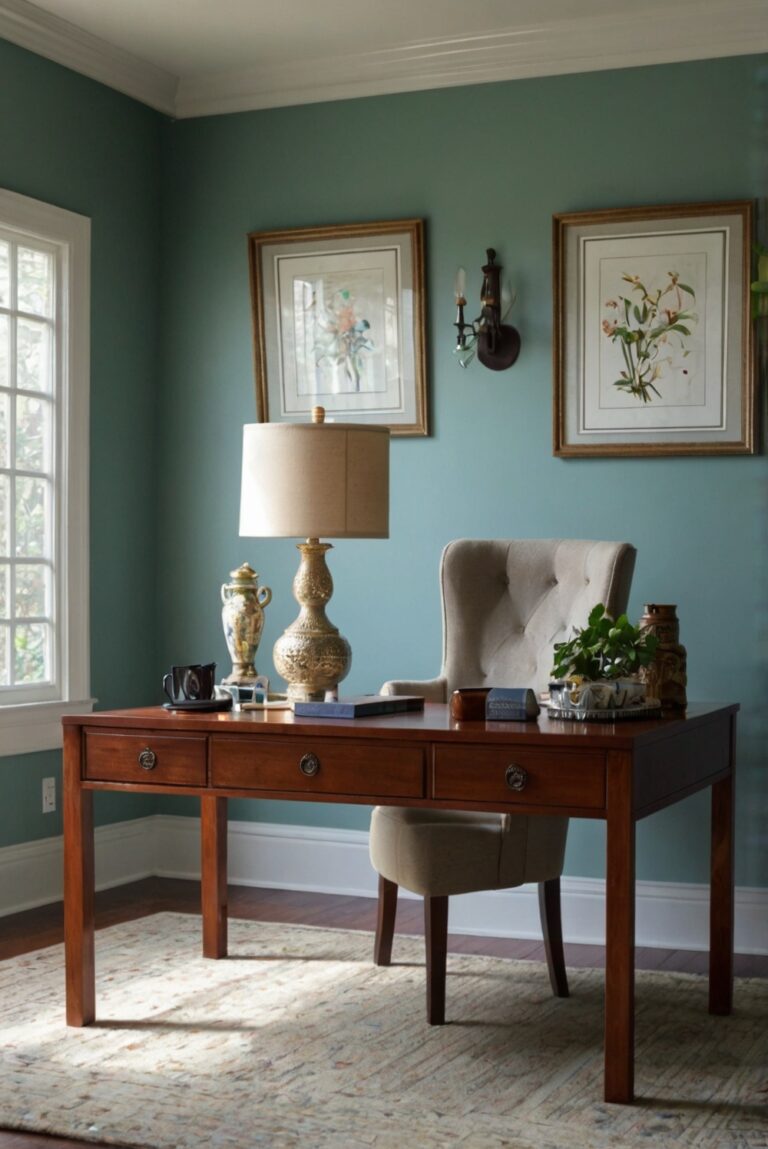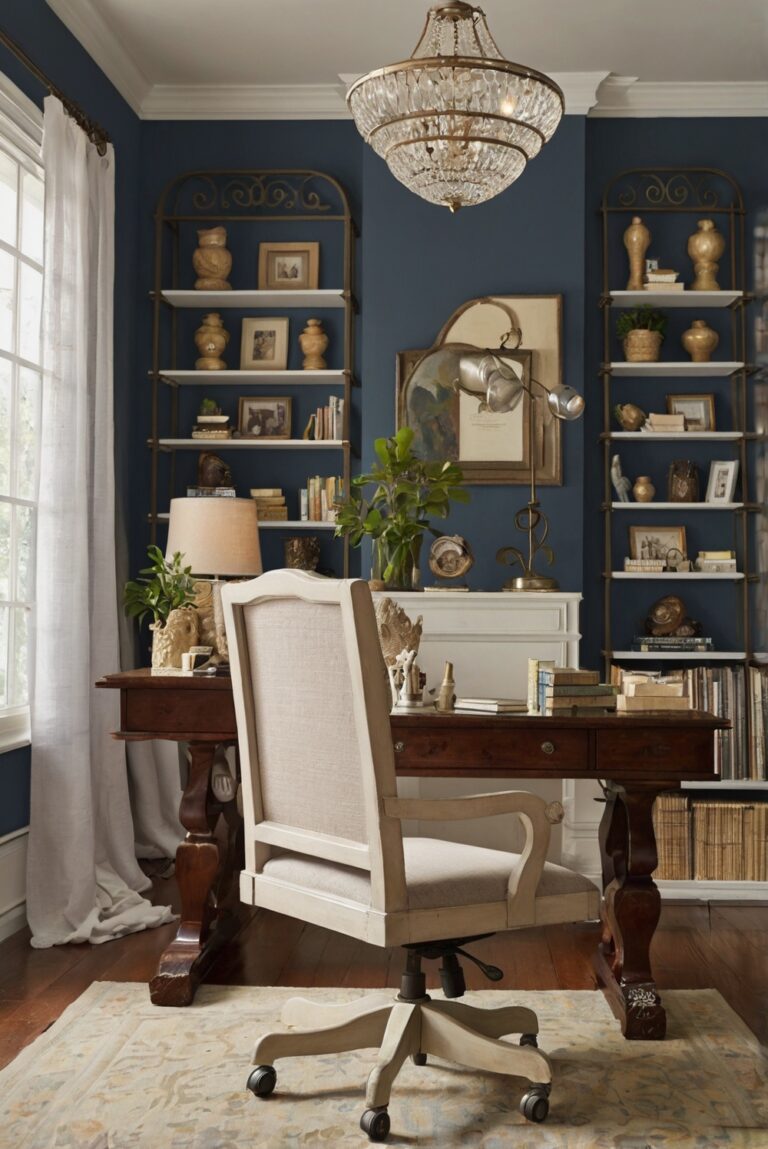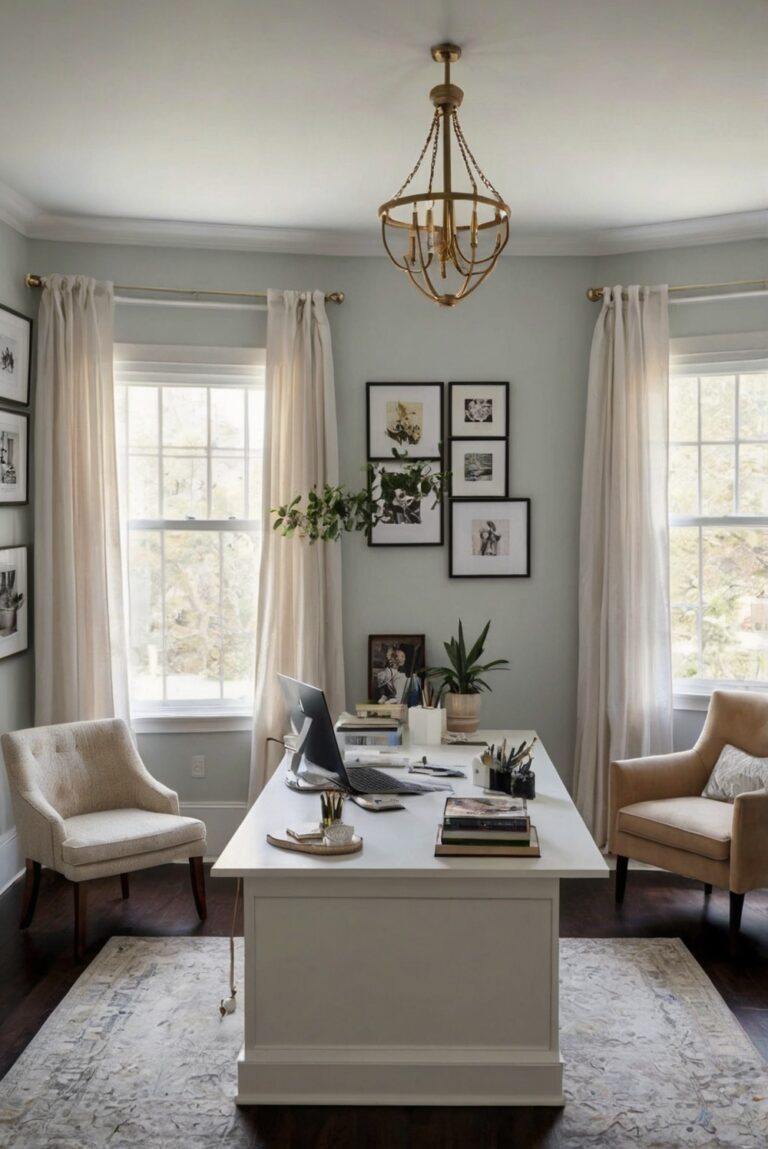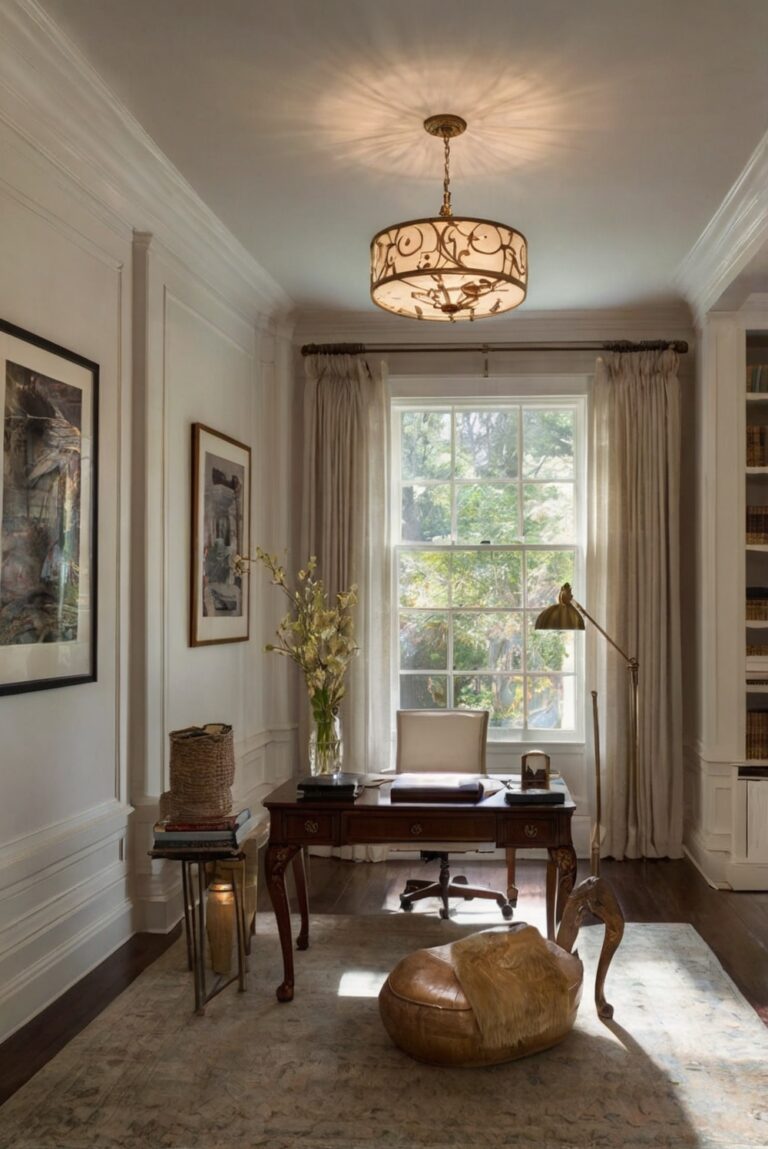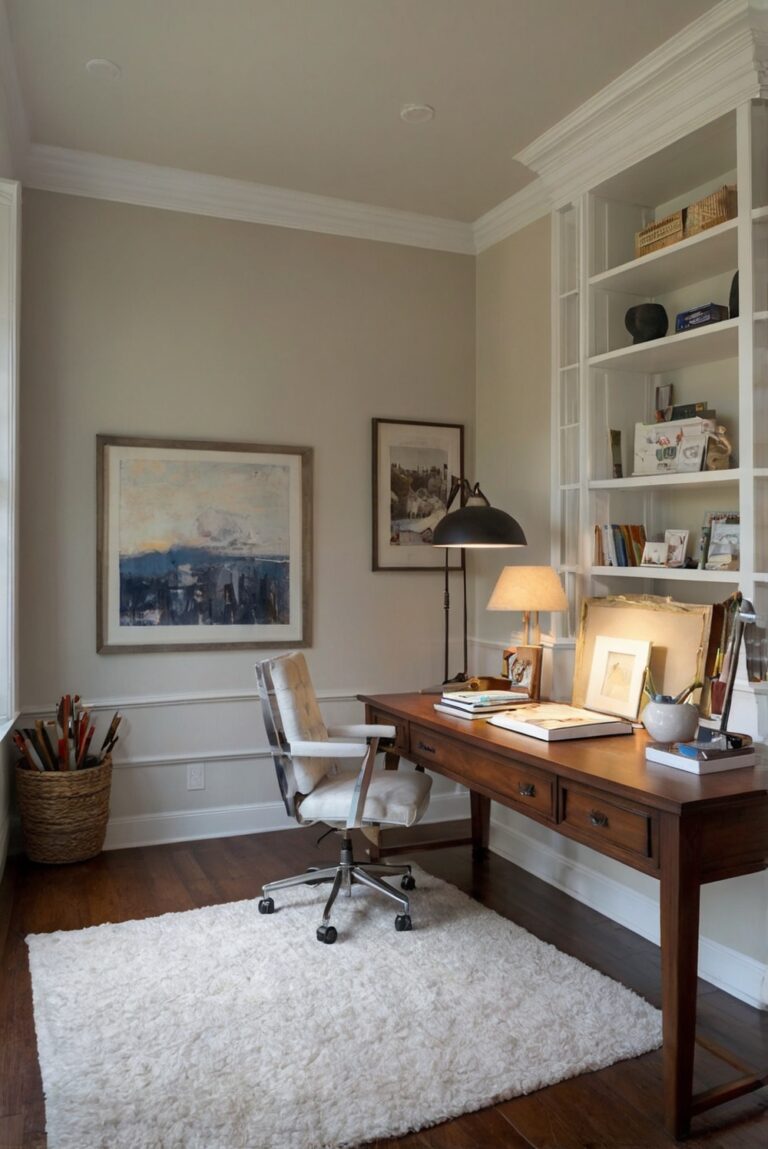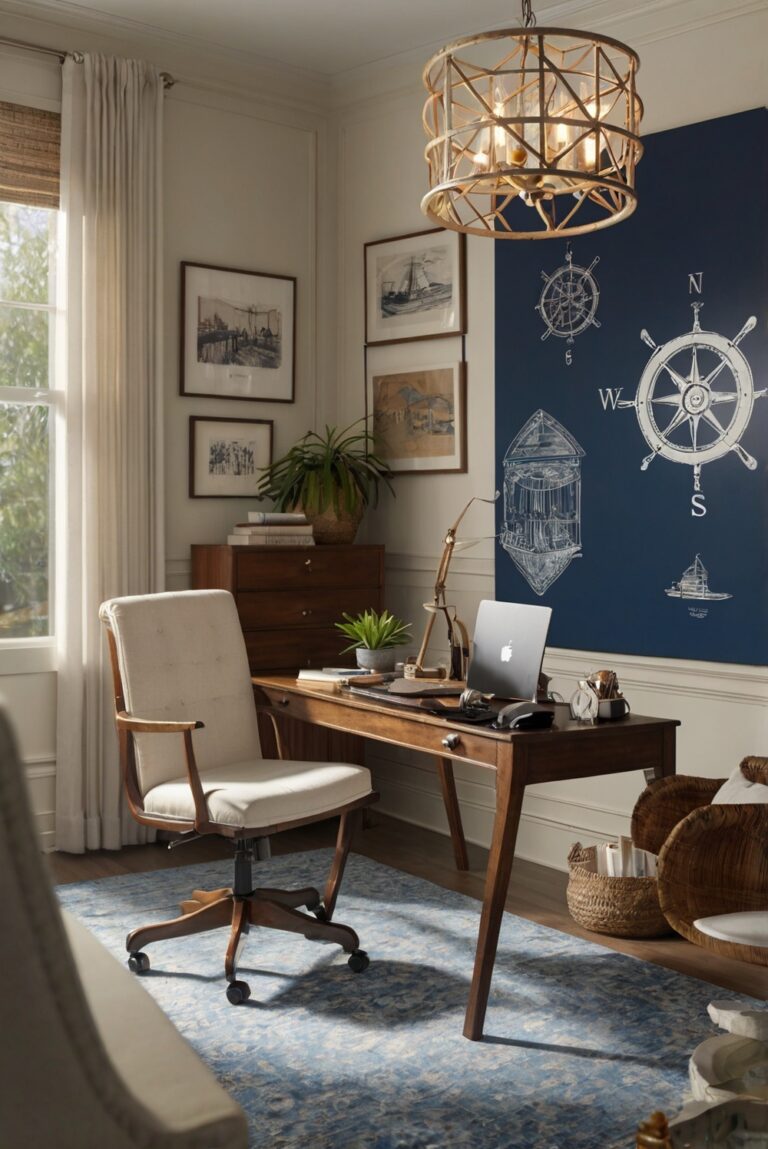Transform your work environment with a strategic home office lighting layout. Enhance productivity and ambiance with effective design decisions.
To design a home office lighting layout for maximum efficiency, start by considering the natural light sources in the room. Place your desk near a window to take advantage of daylight. Supplement the natural light with task lighting such as LED desk lamps or overhead lighting. Use adjustable fixtures to control the direction and intensity of light. Consider the color temperature of the bulbs – choose cooler temperatures for productive work areas. Additionally, ensure sufficient ambient lighting for the entire room to reduce eye strain. Properly positioning lighting sources can also enhance the aesthetics of your home office. Regularly evaluate and adjust the lighting layout to maintain an efficient workspace.
How to Design a Home Office Lighting Layout for Maximum Efficiency?
Assess the Space:
Start by assessing your home office space. Consider the size of the room, the natural light available, and the activities you will be conducting in the space. Understanding the layout and dimensions of the room will help you determine the type and placement of lighting fixtures needed for optimal functionality.
Understand Different Lighting Types:
There are three main types of lighting that should be incorporated into your home office layout for maximum efficiency:
– Ambient Lighting: This provides overall illumination for the entire room.
– Task Lighting: This is focused on specific work areas to reduce eye strain and improve productivity.
– Accent Lighting: This is used to highlight specific features or decor elements in the room.
Consider Natural Light:
Natural light is essential in any home office as it can boost mood and productivity. Position your desk near windows to make use of natural light during the day. Consider light-filtering curtains or blinds to control the amount of light entering the room.
Optimize Lighting Fixtures:
– Overhead Lighting: Install ceiling lights or track lighting to provide ambient lighting to the entire room.
– Desk Lamps: Use task lighting with desk lamps to illuminate your work surface and reduce glare on screens.
– Floor Lamps: Add floor lamps in darker corners of the room to provide additional ambient or task lighting.
Adjustable Lighting:
Opt for lighting fixtures with adjustable settings or dimmer switches. This allows you to control the intensity of light based on the time of day or specific tasks. Adjustable lighting can help reduce eye strain and create a more comfortable work environment.
Lighting Color Temperature:
Consider the color temperature of your lighting fixtures. Cool white light (4000-5000 Kelvin) is ideal for task lighting as it mimics daylight and promotes alertness. Warm white light (2700-3000 Kelvin) is better for ambient lighting as it creates a cozy atmosphere.
Lighting Placement:
Place lighting fixtures strategically to avoid shadows and glare. Position overhead lights behind or to the side of your workspace to reduce shadows on your work surface. Use task lights on either side of your monitor to minimize glare.
Reduce Glare:
To reduce glare on screens, position lighting fixtures at an angle or use diffusers to soften the light. Avoid placing lights directly above computer screens or reflective surfaces.
In conclusion, designing a home office lighting layout for maximum efficiency involves assessing the space, understanding different lighting types, considering natural light, optimizing lighting fixtures, and ensuring adjustable lighting options. By incorporating these elements into your home office design, you can create a well-lit workspace that enhances productivity and reduces eye strain.
1. What are the key factors to consider when designing a home office lighting layout for maximum efficiency?
When designing a home office lighting layout, it is crucial to consider factors such as the type of work being done, the location of the office within the home, the natural light available, the color temperature of the light bulbs, and the placement of light sources. Studies have shown that proper lighting can improve productivity, reduce eye strain, and enhance mood. By strategically placing task lighting, ambient lighting, and accent lighting, you can create a well-balanced lighting layout that promotes efficiency and focus.
2. How can natural light be utilized effectively in a home office lighting layout?
Natural light is a valuable resource that can enhance the overall lighting design of a home office. Positioning the desk near a window can provide ample natural light during the day, reducing the need for artificial lighting. To maximize the benefits of natural light, consider using sheer curtains or blinds to control glare and ensure optimal lighting conditions. Additionally, incorporating mirrors or light-colored walls can help reflect and distribute natural light throughout the space, creating a bright and inviting work environment.
3. What are the different types of lighting fixtures that can be used in a home office layout?
When designing a home office lighting layout, it is essential to incorporate a variety of lighting fixtures to meet different needs and preferences. Task lighting, such as desk lamps or under-cabinet lights, can provide focused illumination for reading, writing, or computer work. Ambient lighting, like overhead fixtures or wall sconces, can create a comfortable and well-lit environment. Accent lighting, such as track lighting or picture lights, can highlight artwork or decorative elements in the office. By combining these different types of lighting fixtures, you can achieve a versatile and efficient lighting design.
4. How can the color temperature of light bulbs impact the efficiency of a home office lighting layout?
The color temperature of light bulbs can significantly impact the efficiency and effectiveness of a home office lighting layout. Light bulbs with a higher color temperature (measured in Kelvin) emit a cooler, bluish-white light that can enhance focus and productivity. On the other hand, light bulbs with a lower color temperature emit a warmer, yellowish light that can create a cozy and inviting atmosphere. By selecting light bulbs with the appropriate color temperature for your home office, you can create a lighting scheme that supports your work activities and promotes a comfortable work environment.
5. What are some tips for optimizing the energy efficiency of a home office lighting layout?
To optimize the energy efficiency of a home office lighting layout, consider using LED light bulbs, which consume less energy and last longer than traditional incandescent bulbs. Additionally, installing dimmer switches can help regulate the amount of light in the office and reduce energy consumption. Positioning light fixtures strategically to make use of natural light can also minimize the need for artificial lighting during the day. By incorporating these energy-saving strategies into your home office lighting layout, you can create a sustainable and cost-effective workspace that promotes efficiency and productivity.
